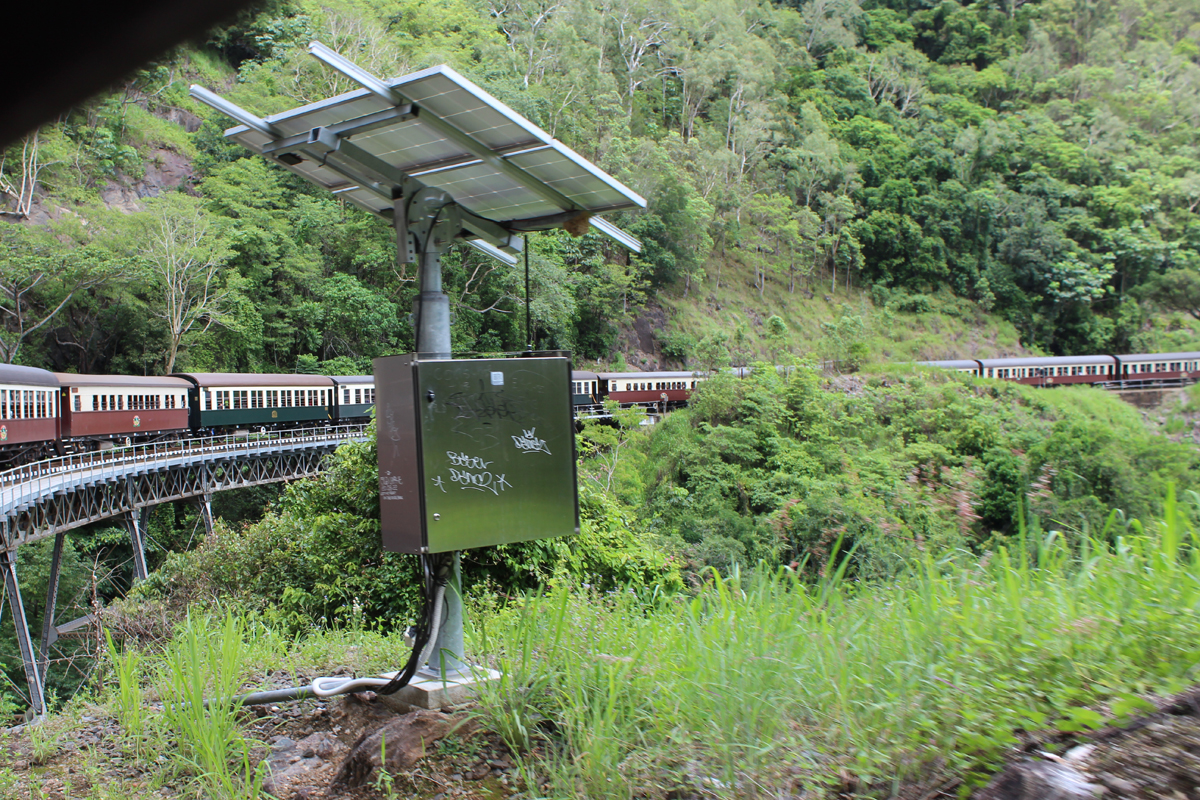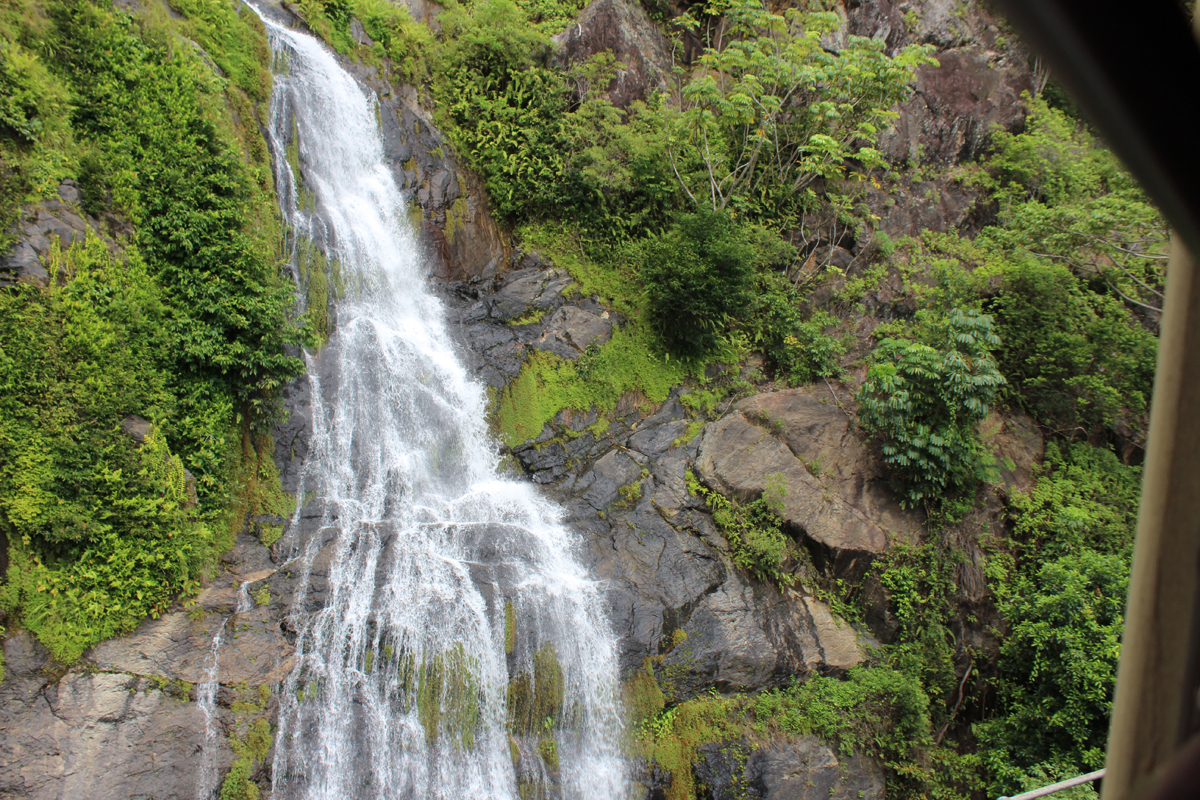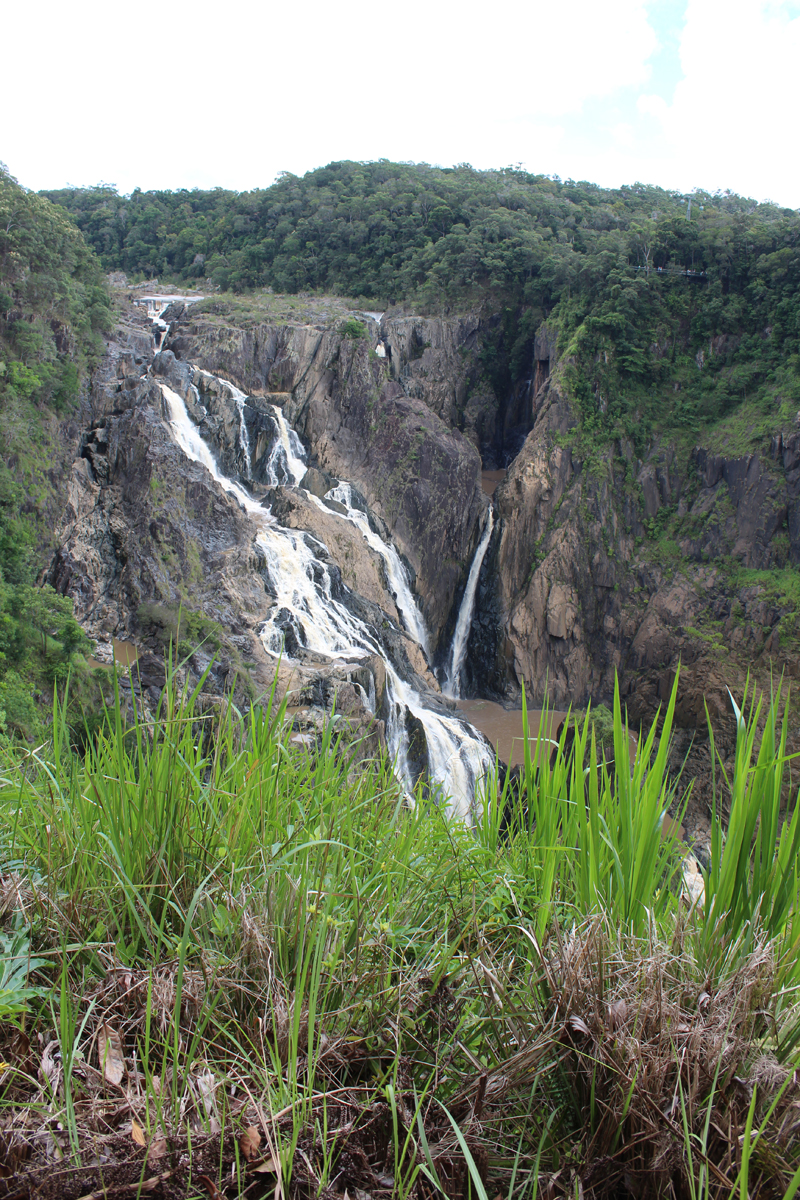The Wet Tropics of Queensland comprises 8,940 square kilometers of territory roughly paralleling the Great Barrier Reef. It “is the oldest continually surviving tropical rainforest in the world.” (Wikipedia) It is also one of the most biologically diverse regions in the world and contains the largest collection of endemic species (native exclusively to the region) in the world.
On the last full day of our visit to our friends Ralph and KC near Cairns, Queensland, we decided to take a rail excursion through the rainforest and up to the town of Kuranda on the tablelands. Now all the rail lines we saw in Queensland were narrow gauge, including the Kuranda Scenic Railway. But while the cane trains were all two foot gauge, the Kuranda Railway is a three foot, six inch gauge. Standard gauge is four foot, eight and a half inches.
We boarded the train in Cairns and it made its way through some suburban neighbourhoods before starting its ascent up the mountain.

The railway has a long history. Construction began in 1886 and it opened for business with passenger service on June 25, 1891. Our trek took us slowly up the mountain passing many scenic vistas along the way. It goes through fifteen hand-made tunnels and over 37 bridges as it climbs to 1076 feet above sea level on the tablelands.


The route is only 37 kilometers (23 miles) long as it winds its way up to Kuranda. But the journey takes about two hours. It’s a long train, fifteen coaches altogether, hauled by two diesel locomotives. The coaches are all vintage antiques over a hundred years old with rich wood paneling and leather seats. The railway became a tourist train in 1936 but this was interrupted by WWII.
The war saw the trains become part of the Australian Ambulance Trains. These five trains ferried sick and wounded soldiers south to Brisbane as well as up the mountain to military hospitals built on the Atherton Tablelands. The railroad’s website notes “there was no highway from Cairns to Brisbane at this time and medicos faced serious problems when it came to evacuation of thousands of wounded and sick servicemen returning from the battlefields in New Guinea and other islands in the southwest Pacific.”



The Stoney Creek Falls are one of the highlights of the train ride. But this scenic waterfall is not accessible just by train. There is a 4.9 kilometer hiking trail there and it is a popular swimming spot with locals. Another feature along the way is Robbs Monument. This is a natural rock formation left standing along the rail line to honor John Robb, who came to Australia from Ireland in 1854 at age 20 to join the gold rush. He ended up becoming a successful building contractor with his friend Best Overend. Their company, Overend and Robb, built schools, sewage and waterworks and rail lines throughout Australia. The Cairns to Kuranda rail line was their last project.

There is one stop along the way before the train gets to Kuranda. This is at the mighty Barron Falls, a cascade waterfall with a vertical drop of 410 feet. Passengers can get out and walk around here. There is a viewing platform offering an unobstructed view of the cataract.


On the other side of the gorge is another viewing platform, accessible from the Skyrail Cablecar ride. That will be part of our next post. Meanwhile, after a short stop, our train headed on to Kuranda, a quaint little tourist town in the middle of nowhere.
There are two trains daily going to Kuranda. The engines get moved from the front of the train to the back for the later trip back down. 56 of these 1720 Class Diesel Electric Locomotives were built from 1966 to 1969, most of them serving Queensland Rail’s extensive network. We end this blog post with a few photos around Kuranda.





That ends our train trip to Kuranda. Click on the link below for some additional photos. Our next post will take us back down the mountain on a 7.5 kilometer long cablecar ride over the rainforest with two stops along the way. One has the option of talking the train or the cablecars in both directions.
